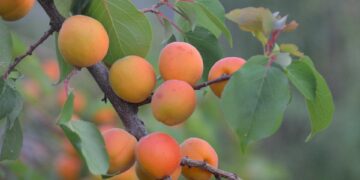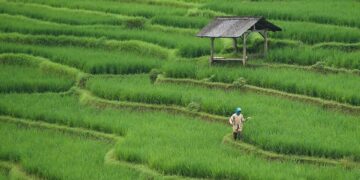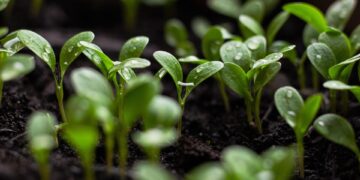[ad_1]
Harvesting Diversity: The Crucial Role of Biodiversity in Sustainable Agriculture
Introduction
In recent years, the importance of biodiversity in sustainable agriculture has gained significant attention. Biodiversity refers to the variety and variability of living organisms in a particular ecosystem. It plays a crucial role in ensuring the resilience and productivity of agricultural systems, as well as in providing a range of ecosystem services that are essential for human well-being.
The Benefits of Biodiversity in Agriculture
Biodiversity in agriculture offers a wide range of benefits that contribute to the overall sustainability of farming practices. One of the key advantages of biodiversity is its ability to enhance the resilience of agricultural systems to environmental stresses and disturbances. By cultivating diverse plant species and animal breeds, farmers can reduce the risk of crop failure and livestock losses due to pests, diseases, and adverse weather conditions.
Moreover, biodiversity in agriculture promotes natural pest control and pollination, reducing the need for chemical inputs such as pesticides and fertilizers. This not only benefits the environment by minimizing pollution and preserving soil health but also improves the quality of agricultural products by reducing chemical residues.
In addition, biodiversity in agriculture plays a crucial role in maintaining soil fertility and structure. By cultivating a diverse range of plant species with different root structures and nutrient requirements, farmers can enhance soil health and prevent erosion. This, in turn, improves water retention and reduces the risk of drought and flood damage.
Challenges to Biodiversity in Agriculture
Despite its numerous benefits, biodiversity in agriculture faces several challenges that threaten its sustainability. One of the main challenges is the intensification of agriculture, which often leads to the monoculture cultivation of a limited number of high-yielding crop varieties. This practice not only reduces genetic diversity but also increases the vulnerability of agricultural systems to pests, diseases, and climate change.
Another challenge to biodiversity in agriculture is the loss of traditional farming practices and indigenous knowledge. As modern agricultural techniques and technologies become more prevalent, traditional farming methods that have been developed over generations are being abandoned, leading to the loss of valuable agroecological knowledge and practices.
Furthermore, the expansion of industrial agriculture and the use of genetically modified organisms (GMOs) pose a threat to biodiversity by promoting the homogenization of agricultural landscapes and the displacement of traditional crop varieties and landraces. This can have negative consequences for food security and the resilience of agricultural systems in the long term.
Promoting Biodiversity in Agriculture
To address the challenges facing biodiversity in agriculture, it is essential to promote practices that support and enhance the diversity of living organisms in agricultural ecosystems. One of the key strategies for promoting biodiversity in agriculture is agroecology, which integrates ecological principles and traditional farming practices to create sustainable and resilient agricultural systems.
Agroecological practices such as crop rotation, intercropping, and agroforestry promote biodiversity by diversifying the plant species grown on farms and creating habitats for beneficial insects and wildlife. These practices not only improve soil health and fertility but also enhance natural pest control and pollination, reducing the need for chemical inputs.
In addition, supporting small-scale and organic farmers who practice diverse and sustainable farming methods is crucial for promoting biodiversity in agriculture. By purchasing locally grown and organic products, consumers can help support farmers who are committed to preserving biodiversity and promoting sustainable agriculture practices.
Furthermore, policymakers can play a key role in promoting biodiversity in agriculture by implementing policies that support agroecological farming practices, protect traditional crop varieties and landraces, and incentivize farmers to adopt sustainable and diverse farming methods. By investing in research and extension services that promote biodiversity in agriculture, policymakers can help ensure the long-term sustainability of agricultural systems.
Conclusion
In conclusion, biodiversity plays a crucial role in sustainable agriculture by enhancing the resilience and productivity of agricultural systems, promoting natural pest control and pollination, and maintaining soil fertility and structure. Despite the challenges facing biodiversity in agriculture, there are numerous strategies that can be implemented to promote and support diversity in farming practices.
By embracing agroecological principles, supporting small-scale and organic farmers, and implementing policies that promote biodiversity in agriculture, we can ensure the long-term sustainability of agricultural systems and preserve the essential ecosystem services that support human well-being. Harvesting diversity in agriculture is not only essential for food security and environmental sustainability but also for the health and prosperity of future generations.
[ad_2]







